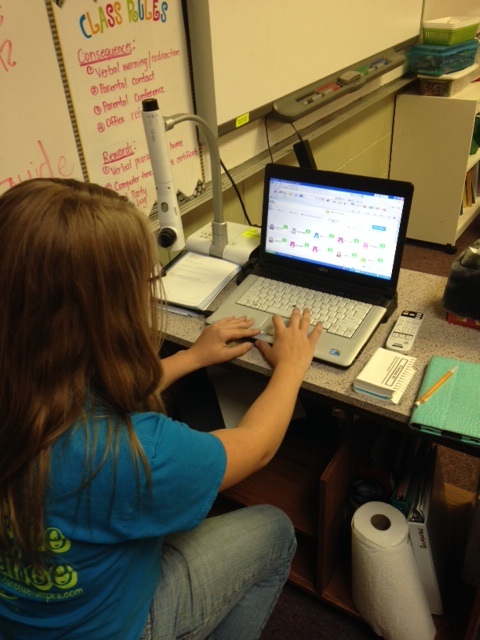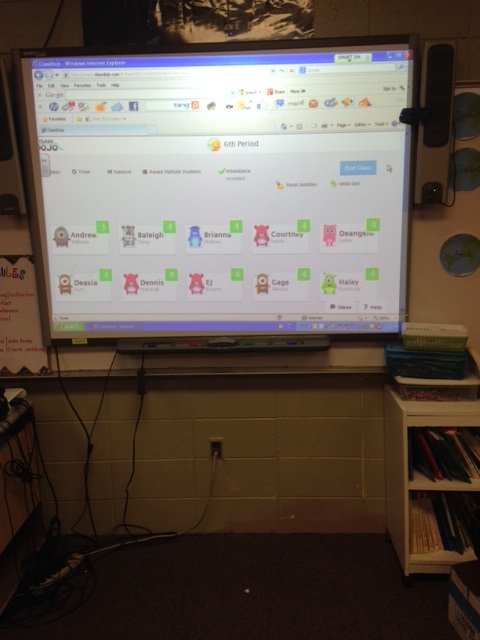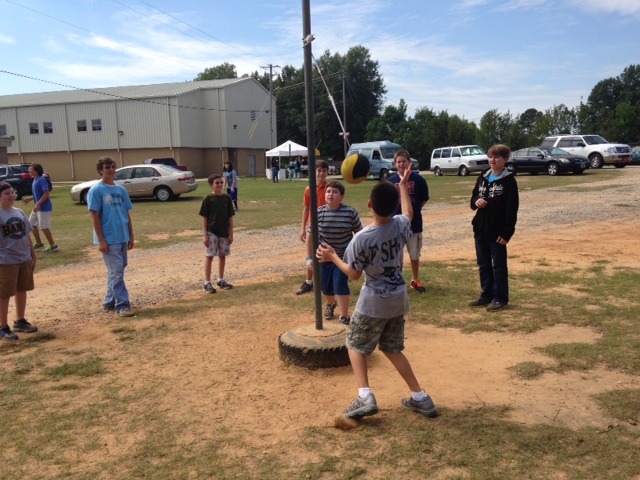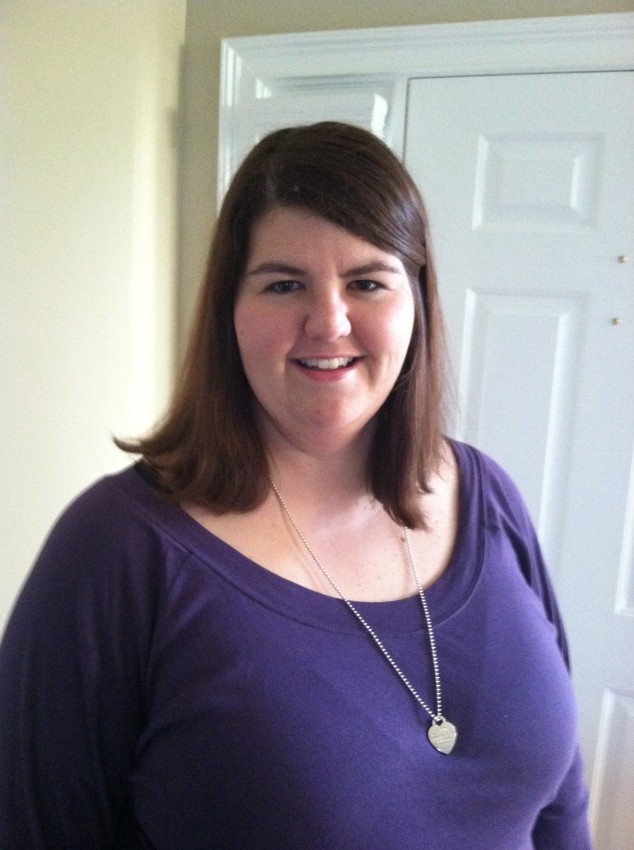
Class Dojo is a popular and somewhat controversial free tech tool for behavior management. I frequently hear it recommended by teachers at all grade levels, but am not familiar with it personally. So, I’ve invited a teacher who has used Class Dojo with her students to explain what’s worked for her. Amanda Killough, who has been teaching middle school Social Studies for eleven years, is here to share with us how Class Dojo helps reinforces positive behavior in both her individual students and the class as a whole. Thank you, Amanda!
Teaching middle school is not for the faint of heart. Often, when I tell people what grade I teach, I get the look of sympathy and a good old-fashioned “Bless your heart!” I, however, love the middle grades and all the challenges that come along with them. Managing middle school kids is sometimes like herding cats, but Class Dojo is a great tool to make it easier.
I have been using Dojo in my classroom for two years and absolutely adore it! Dojo is a free (!) online tool that allows teachers to set up classes and keep track of positive and negative behaviors in class. When I first learned about Dojo, I was not sure if it my students would find it too babyish or silly. I had nothing to worry about- middle school students LOVE Dojo!!
Class Dojo is easy to set-up and use (which is always a plus). Simply create an account using your school email and you are ready to go. Once you are into Dojo, you can choose icons for each class and begin setting up your classes. The program automatically assigns fun avatars for each student, but you can change them. Next, you can use the pre-set positive and negative behaviors or personalize them. Very quick and easy!

Now that you are set-up, the fun begins! I display Dojo on my SMART board and each week I have a Dojo assistant for each class that assists me with getting the class started. That student is chosen based on their previous week’s Dojo points (more on that later). To begin a class in Dojo, you must take attendance first and then the class is ready to earn points. I allow my assistant to take attendance in Dojo while I am getting the class started on their bell ringer.
One of the great things about Dojo is that it allows you to award points to individual students or the entire class. If all students come in and are working on their bell ringer, I have my student Dojo assistant award the entire class a point for being on task. This lets them know I have recognized they are following class procedures. When you award a point, Dojo makes a happy sound and gets the student’s attention. If several students are off task, I do not award the entire class a point. You would be surprised how this one little point has students encouraging each other to come in and get started on their assignment.
After attendance and the initial awarding of points, I take over the Dojo duties. I can keep Dojo minimized and continue on with my lesson for the day. Keeping it minimized gives me instant access if I need to award or take away a point.

In my classroom, I try to use Dojo to focus on positive behaviors instead of the negative ones. For example if a student is off task, I try to award the students around him for being on task. It is my hope that by not specifically “calling him out,” he will recognize that he is not on task. This works most of the time. Of course, if that tactic does not work, I do take away points. Dojo also makes a sad sound when points are loss and this almost immediately catches students’ attention.
Additionally, there is a Dojo app for your tablet or phone. This allows you to award points in the hallways, lunchroom, and other special events.
Another great (maybe?!) thing about Dojo is that parents can have insight into their child’s behavior during the day. All I have to do is input parent emails into Dojo, print out an access code, and they can see all their child’s information. On Fridays, Dojo can be set up to automatically send an email with all the positive and negative points received for the week. Additionally, parents can login whenever they want to check the progress. One of my colleagues has a parent who checks their account hourly and offers incentives at home for reaching a set amount of points!
To keep Dojo relevant to my students, I offer free and intangible rewards. First thing Monday morning, I always award my Dojo prizes. Students with 15 or more points can sit next to a friend in the class or at lunch. This is great because I have assigned seats. Students in this category also have the opportunity to be Dojo assistant for the week. Students with 10-14 points get computer time to play games. Students with 5-9 points get a school “gotcha ticket” that goes into a weekly drawing. The first time a student earn 5-9 points, I allow them to change their avatar to one of their choosing. These are all simple and free rewards that the students love. The little things really do motivate them to exhibit positive behavior!
I also have consequences for those who end up with negative points at the end of the week. These students have to sign the discipline log. Signing the discipline log multiple times leads to parental phones calls/conferences and eventually referrals to administration. At the end of the month, students have not signed the discipline log get to attend the pod party in which our entire pod goes outside and plays for a couple of hours.

Dojo has a lot of great uses in the classroom and it is easy for teachers and students to become addicted! However, we must remember Dojo is free and there are sometimes technical issues. Some days Dojo isn’t the fastest, doesn’t load, or the music doesn’t work, but that isn’t very often. Dojo is a fantastic tool for elementary and early middle school, but I am not sure how well it works at the high school level. I teach 7th grade and sometimes their “I don’t care” attitudes make negative Dojo points less effective.
ClassDojo is another great tool to add to your toolbox to help manage behavior. It has helped me to recognize positive behaviors instead of always focusing on the negative ones. I have also found that it encourages teamwork and self-regulation among my students.
Amanda Killough has been teaching middle school Social Studies for eleven years. She always envisioned herself as a high school teacher, but believes her true calling is with middle school students. Most of the time, she’s found that teaching middle school is more about life lessons than book lessons. She has a B.A. in History from the University of Montevallo, M.Ed. from Auburn University Montgomery in Secondary Education, and an Ed.S in Teacher Leadership from the University of West Alabama. Amanda and her husband have a one-year-old daughter and love the roller coaster called parenthood!

What’s your take on Class Dojo? Please share your opinions, questions, and experiences in the comments. And if you’d like to have your own classroom management strategy or story featured here, just fill out the guest blog form!

Angela Watson
Founder and Writer
Discussion
Leave a Reply
OR

Join our
community
of educators
If you are a teacher who is interested in contributing to the Truth for Teachers website, please click here for more information.
















Thank you so much for the advice! I will do that. It makes me feel better getting advice from a former teacher. I will keep you updated 🙂
Thank you again Angela for the advice. Spoke to the teacher and feel much better now! She listened and was willing to work it out with me. Thanks 🙂
Not a fan. Lose a point for going to the bathroom or getting a drink of water?! Not acceptable. My son was asked, ” Are you sure you need to go to the restroom? We will have to take a point away.” My son said he thought about it and decided that yes indeed he needed to go to the bathroom. Really? It’s a good thing he made it in time. I fully support positive reinforcement but penalizing a child for a natural bodily function? And penalizing a child for wanting water…we lie in central Florida; you never deny a child water. Very disappointed in our school for not using this system in a more positive manner. In fact, his chart reflected only a 85% for the day because he had to go to the bathroom but he did earn participation points and more points for ending up on a high color. Wow – that’s all – Wow.
I agree Aileen. We are also in central Florida and that is horrible penalizing for water! These points made my son hate school and he only started KG 2 weeks ago. I contacted his teacher with my concerns and she thanked me saying she wished all parents would be honest when things are affecting their child. She now no longer gives so many negatives to my son and is focusing more on the positives. Maybe talking to the teacher will help you and your child as well 🙂
My child got a negative for hugging her friend hello :/
My 5th grader has always been an honor roll student and recognized for her excellent classroom behavior. Class Dojo started last week and she had 100% positive – GREEN circle. Monday she received only one comment for “talking after she finished her work, when the class was told multiple times to read silently. Her Dojo read 100% negative = RED circle. She was devastated and wanted to leave the school. One teacher of three posted one negative comment… no other positive ones. The impact on her self-esteem was sadly remarkable. She thought her teachers think she’s a bad kid. A simple redirect would have corrected the behavior. If that happened and she continued to talk… that would warrant a negative dojo.
Today, three positive comments made it 75% green. That one negative has had a demoralizing impact on a typically good student.
I agree with the teacher that reinforces on-target behavior rather than using this as punishment tool.
Update: I did share with her teachers that the Monday feedback had an unintended negative impact on the child and today there were the three positive dojo’s. I can see where it would be easy to use this tool only to correct off-target behaviors and create a negative impact on the students. It must be used in a balanced way or it can be harmful.
I’m so glad you were able to talk with your child’s teacher. I hope that her focus will continue to be on recognizing the positive rather than the negative.